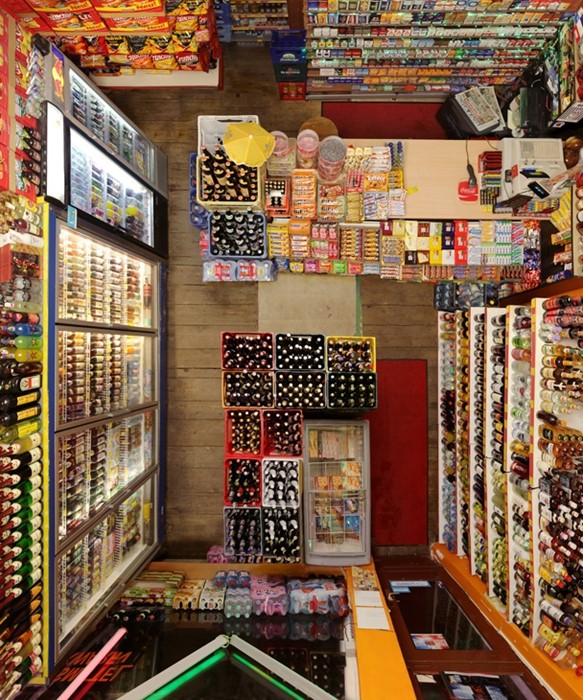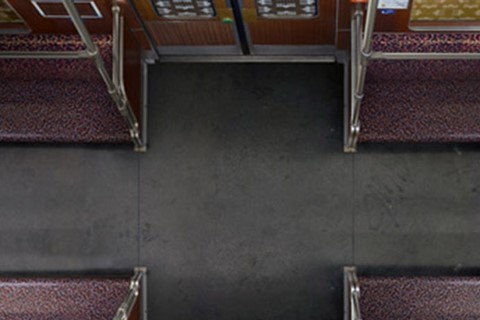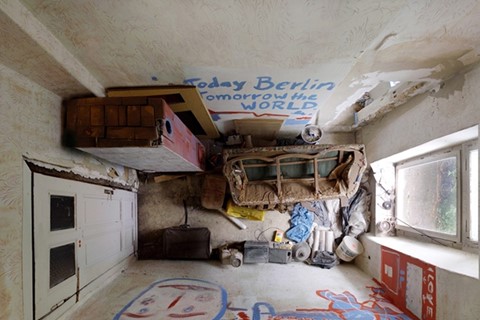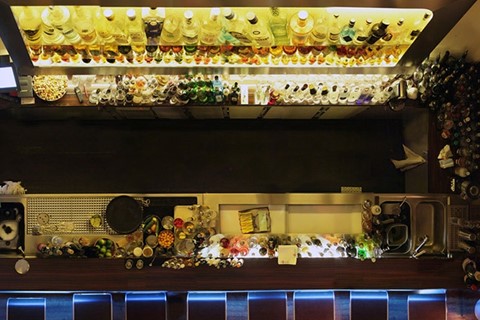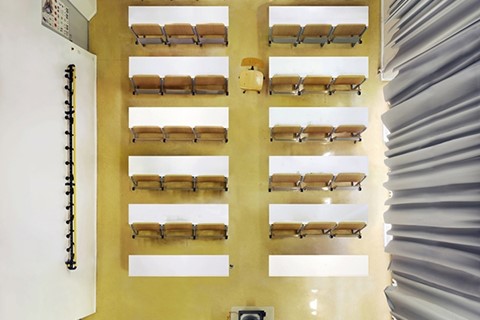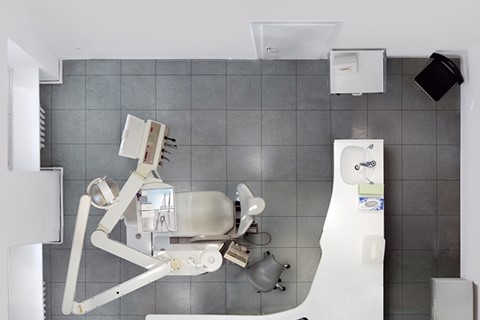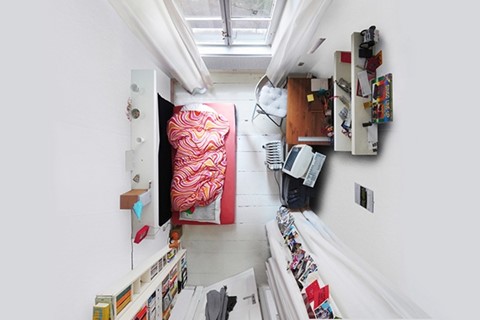The latest issue of AnOther Magazine takes as its theme the notion of home, burrowing into the minds of Michelle Williams, Ai Weiwei and Raf Simons to explore the essentials that forge the intellectual space of “home” for them...
The latest issue of AnOther Magazine takes as its theme the notion of home, burrowing into the minds of Michelle Williams, Ai Weiwei and Raf Simons to explore the ideas, the essentials and the individuals that forge the intellectual space of “home” for them. In contrast, the work of photographer Menno Aden is a literal consideration of lived-in spaces, yet one that comes from an unusual standpoint – above.
Commonly associated with the surveillance camera and illicit filming, gaining the overview of a space is a voyeuristic sensation. In his Room Portraits, Aden freezes these faintly uncomfortable moments in time, allowing viewers to enter these – often very personal – spaces and explore them from an abstract perspective. Capturing a variety of rooms – from the cluttered intimacy of a living room or a bedsit, to the ordered anonymity of an operating room and a 1ft square photobooth, spaces are stripped of their familiarity, morphing into jigsaw puzzles of shapes and object configurations. Without people inserted to define them, they are mysteries to be solved, with personalities deduced from the curl of an unmade bed, the stripes of dust on a top shelf, the stark minimalism of a leather-clad lounge versus the clamorous tangle of accoutrements in a wooden-floored kitchen. In contrast, in commercial spaces such as a corner shop or a shoe shop, from on high the objects lose their vital branded individuality, becoming part of a pattern or design prescribed by the artist himself. Here Aden discusses the elaborate process of constructing the images and provides his own definition of what makes a house a home.
What inspired the Room Portraits?
My main interest as an artist is the relationship between human beings and technology. I was always interested in the question of how we are influenced by the things, by architecture and industrial design, that surrounds us. For my series Room Portraits I was inspired by different influences, e.g. the photo-mosaics by David Hockney from the 1980s where he arranged many pictures of a scene into a split one.
The idea of Room Portraits was born when I did a kind of "photo-diary" of the food I ate. I took pictures of several meals standing on a chair taking a photo downwards on the foods and dishes that were lying on the table. I realised that the cups, plates and foods became very abstract and that the food didn't look that tasty anymore. But at the same time I liked this perspective because of the total overview it gives to the viewer and because these pictures lack a focus on a single thing, so that all the items look emancipated next to each other. The view from above is a very analytical one and, by shooting from above, I was managing to make the furniture surrounding the plates look abstract as well. So I decided to try and create views of the whole space, but it took a lot of different methods and many, many days until I had my first satellite view of a room. Even today I need between six and 50 days to finish one Room Portrait.
"With people inside the rooms, the most important question – “who is living there?” – would already be answered. Without people, the furniture starts to speak."
Even though there are no figures in the rooms, the works often feel voyeuristic, like the viewers are intruding on a private world. What is it about surveillance and voyeurism that interested you?
Actually in a few pictures there are people inside, but then they are just "part" of the furniture or the surrounding items and you don't consider them as individuals.
It was a conscious decision to keep the rooms empty. With people inside the rooms, the most important question – “who is living there?” – would already be answered. Without people, the furniture starts to speak, to tell us what kind of person could live or work there. The rooms look like stills by surveillance cameras and as a viewer you remain undisturbed, able to wander around with your eyes looking down on the items that belong to someone you don't know. As the rooms are sometimes a little reminiscent of puppet houses, viewing them gives you a godlike view, a feeling of being Big Brother. I guess surveillance, and voyeurism, is still a growing phenomenon (or problem) of our time. And this again reflects back on us and how we behave in open space, which becomes a kind of stage.
In changing the perspective of a normal photo - turning it on its head as it were - were there things about rooms that you normally wouldn't notice that started to jump out at you?
Yes, this happens all the time. For me it's still not easy to imagine how the view from above on a room would look at the end. Also I often discover hidden items on shelves or other dirty corners.
Have you taken a photograph of your own house in this way? If so, is it included?
Yes of course. Very often I'm doing test-shots in my house. Maybe one day I'll publish a self-room-portrait...
What are three things that make a home for you?
Four walls, a ceiling and a floor. If they are already there: a nice kitchen, a nice meal and friends.
Where do you feel most at home?
At home.
Text by Tish Wrigley
